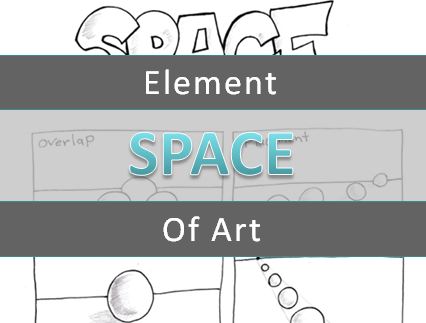Element of Art Space
There are several different ways to illustrate space when creating a work of art or drawing. You can use just one of these techniques. Or, you can use a few of them. It’s even possible to use all the different ways to show space in one piece of art.
Let’s look at the dictionary definition of space.
FREE Elements of Art Guide
Definition of Space in Art
Illustrating a sense of depth on a flat surface, or defining positive and negative areas.
As you can see there are basically two different ways to use space in art.
You can use it to show depth and it can be used to define an area as positive or negative.
These concepts can be applied to both two dimensional and three dimensional works.
The use of positive and negative space in art is much simpler to explain, so let’s begin there.
Positive and Negative Space in Art
Positive space is the term used when referring to an object itself. Whereas negative space is the area around, between, and within an object.
For example, if you drew a person with their hand on their hip, the person would be the positive space. And the area around the person would be the negative space. This also includes the area between the arm and body.
Positive and negative space can also be used to create an optical illusion, as demonstrated in Rubin’s Vase.
Depending on where you focus, you can see either two faces or a vase.
I’m sure you’ve seen many more of these types of illusions as well where the image changes with your area of focus.
Now let’s move onto how we create the illusion of depth in art. There are many different techniques to do this.
Ways to Show Space in Art
- Size
- Placement (horizon) – fore, middle, background
- Overlap
- Linear perspective
- Atmospheric perspective
Size to Show Space in Art
By making objects smaller as they get further away we can show space in art. This is pretty easy to implement in your drawings.
Objects are larger up close. And smaller as they get further away. If you had several of the same object you would do this incrementally as they get further away.
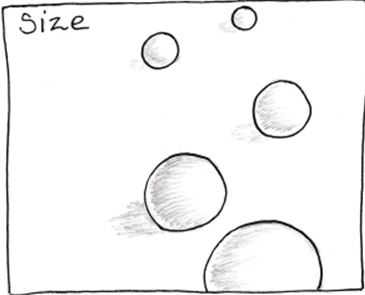
Placement to Show Space
Next we’ll look at placement, or position. This is how an object is drawn in relationship to the horizon line.
The closer the object is to the horizon line, the further away it is. And objects drawn further away are perceived as being closer.
This is also known as foreground, middle ground, and background.

Using Overlap in Art
We can also use overlapping to show space. If one object is covering part of another object, then it has to be closer to the viewer.
You probably use this technique all the time without even realizing it.
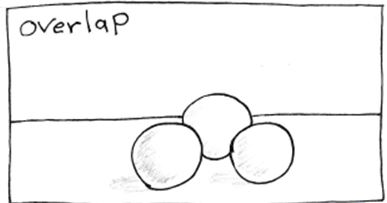
Linear Perspective
This is what is more commonly known as one point perspective. In this instance we are creating the illusion of space by showing depth in art.
This process can be used to create 3D drawings and works of art. Once mastered, perspective can be used in many ways when creating drawings and artwork. Whether you follow the technical process with a ruler and vanishing point. Or, if you just use the concepts and draw out your perspective freehand.
Definition of Linear Perspective
A type of perspective used by artists in which the relative size, shape, and position of objects are determined by drawn or imagined lines converging at a point on the horizon.
As you can see, the use of linear perspective uses several of the previously mentioned techniques.
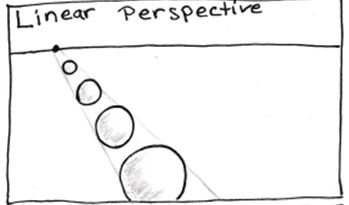
By combining two or more of the techniques used to create space, you can further create the illusion of depth in your artwork.
Art Tutorials That Use Linear Perspective
Atmospheric Perspective
This technique was first developed by Leonardo da Vinci where muted colors were used to paint areas further away.
The basic concept of atmospheric perspective is that the further away an object is, the less detailed it is. This can be illustrated by the use of color, or by the level of detail we show.
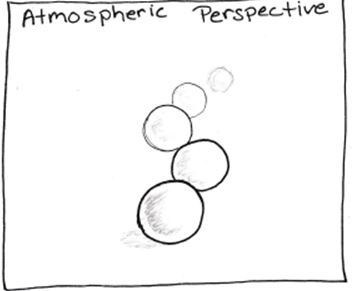
Element of Art Space (And How It’s Used In Art)
There are a lot of different ways to show the illusion of space in art. You can choose to use just one of the techniques. Or you can use a combination of techniques.
The element of art space is critical to understand if you want to create the illusion of the third dimension in your art work. Drawing in 3D is not as difficult as one might think. But by understanding how to use space in art, you can increase your success rate of drawing 3D.
We have several art tutorials that will help you learn how to drawing 3D, and understanding the elements of art.
If you have any questions or simply need a little help with your drawings, leave a comment and I’ll get back with you.
Posts Related to Showing Space in Art

